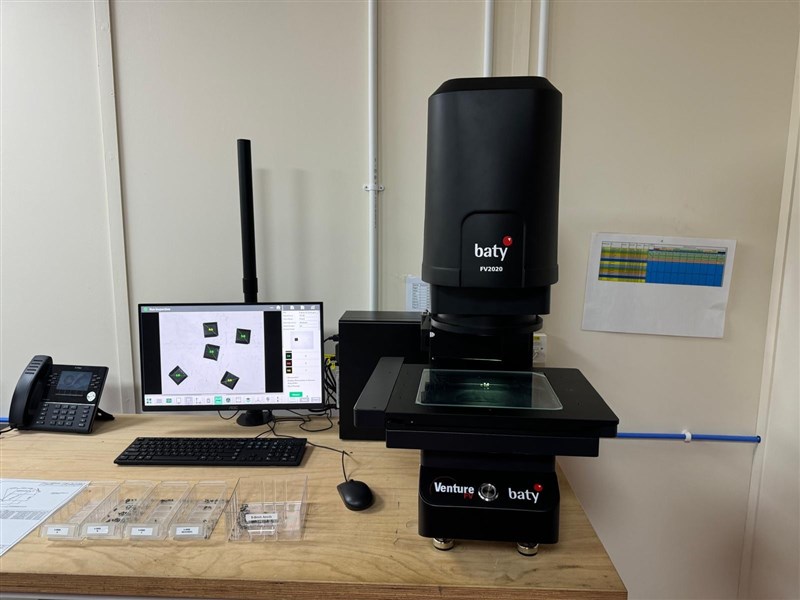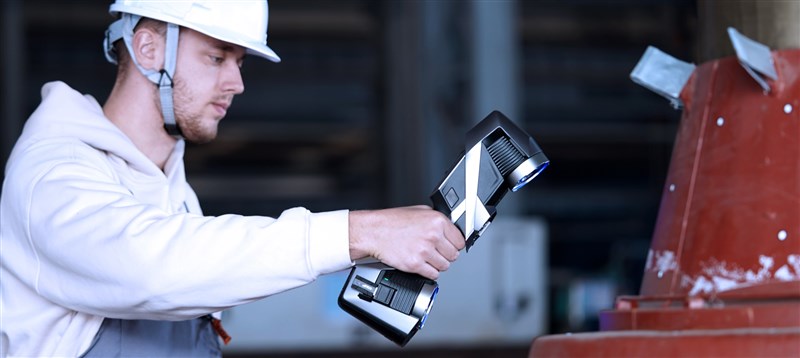
Recognising the need for a faster and more repeatable solution, Bowers Group turned to the Baty Venture FV 2020.

A breakthrough opportunity for R&D processes awaits the Vietnamese engineering community. The specialized workshop "Driving Engineering Innovation Through Smart Simulation" organized by ANSYS will take place on October 29, 2025, at the Innovation Hub Building, updating the latest advanced simulation solutions for the manufacturing, electronics design, and Nano-Micro industries.

The portable 3D scanner market is on the brink of significant expansion. With ongoing technological advancements and the integration of 3D scanning in various sectors, this market is poised to grow rapidly over the next decade. This article delves into the factors contributing to this growth, the projected rates across different regions, and the challenges and opportunities that lie ahead.
With a plethora of companies using additive manufacturing in their production process, we want to identify industries that we believe benefit most from additive manufacturing. By looking at these industries, it’s easy to understand how and why 3D printers are changing manufacturing as a whole.
.jpg)
The aerospace industry has some of the highest standards in part performance. Aerospace parts must withstand extreme temperatures and chemicals while being subjected to repeated loading, all while remaining as light as possible. Individual part failures often result in full system failures on aircraft carrying lives and cargo – so failure is simply not an option. Since part precision is critical for aircraft, aerospace engineers have taken to 3D printing inspection tooling to reduce costs for low-volume parts.
.jpg)
The automotive industry has been charging ahead with additive manufacturing, with high-profile companies such as Audi using 3D printers. It’s not just the Audis of the world are using 3D printers – everything from race car teams to sub manufacturers (OEMs) for each car manufacturer are utilizing 3D printers. The real value in 3D printed parts for automotive manufacturers doesn’t currently lie in printed parts going on cars, but instead for the tooling and fixtures that aide the manufacturing process.
The most common parts printed by automotive manufacturers are fixtures, cradles, and prototypes, which need to be stiff and strong, and durable. It’s also not unheard of for some to use 3D printers to fabricate replacement parts for centuries-old cars. This ensures there are enough pieces to service legacy cars as well as standard maintenance, repairment, and operations.

From jigs and fixtures all the way to end-of-arm tooling, 3D printers are completely turning the decades-old manufacturing industry on its head. Companies are able to create custom, low-volume tooling and fixtures at a fraction of the traditional price, giving designers and engineers more time to spend on revenue-generating parts. Small manufacturers get the same advantages with a 3D printer as giant, global manufacturers, to improve and expedite processing while mitigating downtime. Companies are also able to have more creative freedom while saving on labor costs and time.
Metal fabrication company Lean Machine, for instance, has approached 3D printing with a design for additive manufacturing (DFAM) approach, saving them upwards of $4000 per tool.
.png)
From customizability to reduced weight, the factors that make successful robotics parts match well with 3D printing capabilities. Parts like grippers and sensor mounts are expensive to fabricate and need to be custom designed for different uses. Robotics engineers utilize 3D printers for end-of-arm tooling and end-use parts, from gripper fingers to entire robot components to reduce the weight of the overall product to ensure the tools can move faster and carry heavier items. Instead of paying large amounts of money for a non-customized design, Markforged 3D printers allow robotics companies to design and fabricate light, complex parts such as end-of-arm tooling at a fraction of the cost.
Haddington Dynamics, for example, is utilizing its four printers to create 3D printed robot arms for NASA and GoogleX for 58% less than traditional manufacturing.
.jpg)
As the 3D printing industry grows, educational institutes are rushing to make sure they stay on the cutting edge of the new technology for research and education purposes. From professors printing parts for educational tools to convey the lesson plan to PhD students utilizing the printers for research, 3D printers serve a variety of purposes in colleges. Colleges like Purdue University in Indiana have taken a great interest in teaching its students about emerging additive manufacturing materials and technology.
(84) 896 555 247